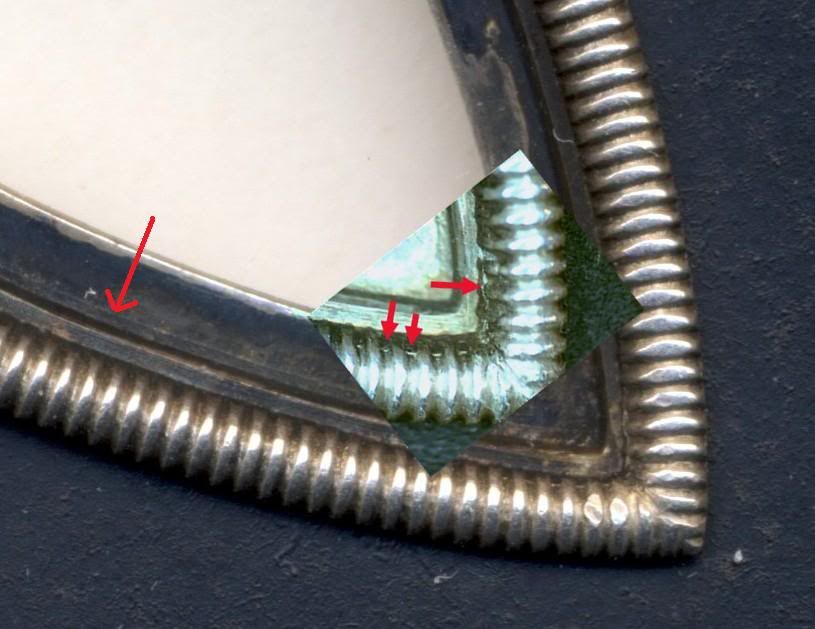Today I got this cross in the mail. It is - at a first glance - a nice S&L A-Type micro 800.
Announcement
Collapse
No announcement yet.
S&L A-Type with chemical frosting
Collapse
X
-
It is not astonishing that such an early cross (no flaw at the lower 3 o'clock arm) has no frosting left. That is the main reason that I do not look after the frosting too closely.
When I took my microscope picture of the 9-12 o;clock flaw which is one of the defining characters of an A-Type, I realized how well defined the flaws are.Attached Files
-
That made me look closer and then I realized that this cross is one of the very few (I think I have seen three so far) with the (early) chemical frosting. This type of frosting was done by covering the not-to-be-frosted areas of the cross with "whatever" and exhibit the uncovered areas to an acid solution. This acid was eating away on the "200"- part copper of the "800" silver, leaving a rough surface of nearly 100% silver, i.e. the famous frosting. Over the time, this surface gets tarnished and the the difference between the frosted and non-frosted areas basically disappears.
One can hardly recognize the line between frosted and not frosted.Attached Files
Comment
-
This tells me that this cross is one of the very early and awarded crosses from S&L. As it seems from the data I have so far it did not take S&L very long to find out that the use of the "painted" frosting (which was generally in use with the EK 1 and EK 2) was evidently more cost-effective and looked just as good.
If one sees an S&L A-Type it might be advisable to look at the remains of the frosting. It might just be an early and rare one with the chemical frosting.
Dietrich
Comment
-
Another S&L A-Type micro 800 with well defined flaws, the line between frosted and not frosted is still visible even if tarnished....Originally posted by Dietrich Maerz View PostThat made me look closer and then I realized that this cross is one of the very few (I think I have seen three so far) with the (early) chemical frosting. This type of frosting was done by covering the not-to-be-frosted areas of the cross with "whatever" and exhibit the uncovered areas to an acid solution. This acid was eating away on the "200"- part copper of the "800" silver, leaving a rough surface of nearly 100% silver, i.e. the famous frosting. Over the time, this surface gets tarnished and the the difference between the frosted and non-frosted areas basically disappears.
One can hardly recognize the line between frosted and not frosted.
Robert
[IMG] [/IMG]
[/IMG]
Comment
Users Viewing this Thread
Collapse
There is currently 1 user online. 0 members and 1 guests.
Most users ever online was 10,032 at 08:13 PM on 09-28-2024.



Comment